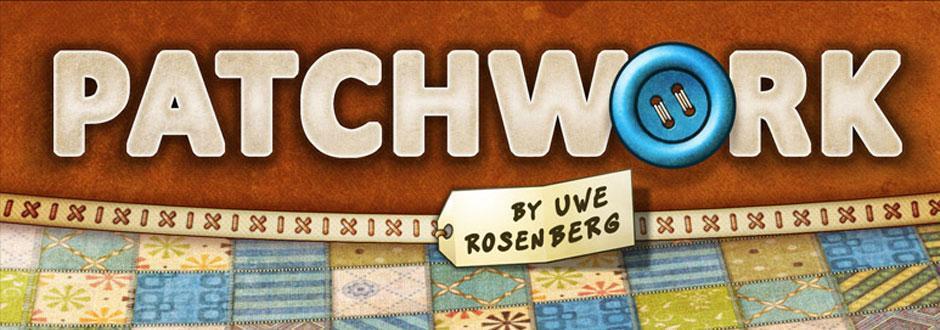Patchwork Board Game Review
Overview:
Name of the game: Patchwork
BGG Weight: 1.6 / 5
Year published: 2014
Publisher: Mayfair Games
Designer: Uwe Rosenberg
Number of players: 2
Playing time: 15-30 minutes
Game category/theme: Abstract Strategy
Mechanics: Income, Open Drafting, Rondel, Tile Placement, Turn Order:, Time Track, Victory Points
Ratings:
Strategy: 7.5
Complexity: 4.0
Player Interaction: 4.5
Replayability: 8.0
Game Rating: 8.0
Cost: 5.0
Calculations:
Weight Rating = (4.0 + 7.5) = 11.5
Playability Rating = [(8.0 + 4.5 + 8.0) – 4.0] = 16.5
Play Rating Score = (11.5 + 16.5) x 2 = 56.0
Value Rating = 56.0 / 5.0 = 11.20
Final Score Rating = 56.0 + 11.20 = 67.20
Review:
Patchwork is a two-player game where players compete to create the most aesthetically pleasing and spatially efficient quilt. Players use Tetris-like tiles to fill up their personal quilt boards, trying to fill as many spaces as possible while also covering certain special tiles that offer benefits like extra buttons or more time. Players use buttons as currency to purchase tiles, and the player with the most buttons at the end of the game gets a bonus to their final score.
Patchwork offers no solo or cooperative play, as it is strictly a two-player game. However, it is a very fun and strategic game that is easy to learn and quick to play, making it a great choice for couples or friends looking for a game to play together. It has a very charming and unique theme, and the mechanics are simple but satisfying.
Here are ten other games that may appeal to someone who likes Patchwork:
- Azul: Players take turns drafting colorful tiles and placing them onto their personal board, trying to create beautiful and efficient patterns. Like Patchwork, it’s a two-player game with simple but strategic mechanics.
- Cottage Garden: Players compete to create the most beautiful garden, using tiles to fill up their personal boards. It’s a bit more complex than Patchwork, but still very fun and satisfying.
- Santorini: A beautiful abstract strategy game where players move their pieces around a board, trying to reach the top of a tower. It’s a bit more complex than Patchwork, but still has a similar level of strategy and player interaction.
- Onitama: A two-player abstract strategy game where players move their pieces around a board, trying to capture the opponent’s master. It’s quick and easy to learn, but offers a lot of depth and strategy.
- Photosynthesis: Players grow trees and try to absorb the most sunlight, using beautiful and unique tree pieces. It’s a bit more complex than Patchwork, but has a similar level of strategy and replayability.
- Kingdomino: A simple but satisfying game where players create a kingdom by drafting tiles and placing them onto their personal board. It’s quick and easy to learn, but still offers a good amount of strategy and player interaction.
- Splendor: Players collect gems and use them to purchase cards, trying to create the most efficient engine. It’s a bit more complex than Patchwork, but still has a similar level of strategy and replayability.
- Carcassonne: A classic tile-laying game where players build up a medieval landscape, trying to score the most points by completing cities, roads, and farms.
This review was provided by Open Source Artificial Intelligence programs. It uses a series of complex statement to have AI programs amalgomate their databases to produces information on board games. These reviews are completely unedited output from the AI bots.

